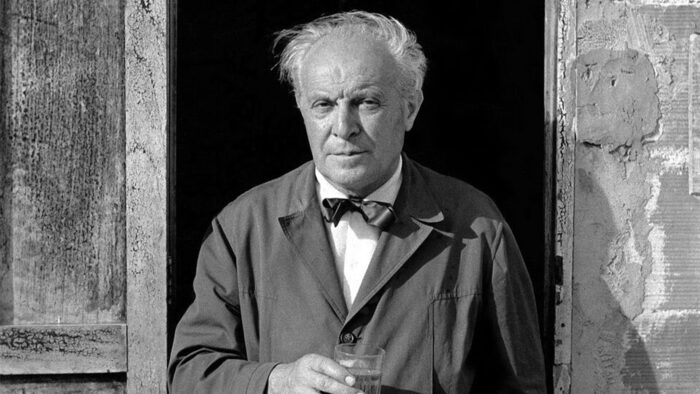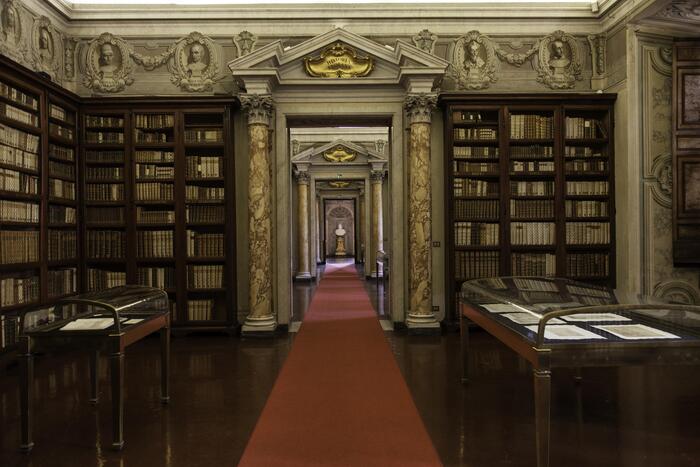"Who asks, for example, if the
Critique of Pure Reason
was written in the year seventeen hundred or how many?" This is how Ludwig Wittgenstein responded to Bertrand Russell when, in 1920, he learned that they had once again refused to publish his
Tractatus logico-philosophicus
.
He was 32 years old and he was convinced of the value of his work: "I think I have definitely solved our problems." He was referring to nothing less than the problems that philosophy had dragged on for centuries. So he did not care if the book appeared "twenty or one hundred years" later. What he was not willing was to pay himself for the edition: “Writing it has been
my business
;
Now it is the world's business to accept it in the usual way ”.
Money, of course, was not a problem: Wittgenstein belonged to one of the richest families in Europe.
The problem was, he put it himself, his own "arrogance" and the conviction that the philosophical community would not be up to those meager 100 pages.
Among those who would understand nothing were university professors in general and, painfully for him, one in particular: his admired Gottlob Frege, great priest of mathematical logic.
"He does not understand a word of my work and I am already exhausted from explaining him," he wrote in another letter.
Ready for publication in 1918, the
Tractatus
would see the light in the fall of 1921 as part of the
Annals of Philosophy of Nature
magazine
.
It bore the title in German and a foreword by Russell himself in which he called it an "event" that "no serious philosopher" could "afford to neglect" since. The British thinker was one of the most famous intellectuals in Europe and had used his fame to get his friend's text to see the light. By then its author had decided to abandon any academic career to work as a gardener in a convent near Vienna. Although his mentor at Cambridge had heeded his bland instructions - "I am renouncing to make any further arrangements for its publication (...) you can do whatever you want with it" - Wittgenstein did not hesitate to cross out the edition as "pirate" and the editor of "Archicharlatán". Nevertheless,he assumed the bilingual version published in London in 1922 and already with the Latin title of Spinozian echoes proposed by another eminent colleague: George E. Moore. He did so, failing the translation, from his new post as a children's teacher in the village of Trattenbach, not far from the Hungarian border. There he began to write a
Vocabulary for primary schools
that would be his only book published in life together with the
Tractatus,
that that same course was the subject of a seminar at the University of Vienna and in five years was translated into Chinese.
These works crystallize after the war, are born of personal crises and stage another battle: that of language
The editorial avatars of Wittgenstein's debut show the randomness of the round numbers. In the future, no one may wonder if it was published in this or that decade of the 20th century, but the truth is that its appearance in book form made 1922 the
annus mirabilis
of Western culture. That year also saw the light two works that revolutionized the novel and poetry:
Ulysses
,
by James Joyce, and
The wasteland
,
by TS Eliot. What do they have in common? That all crystallize after the First World War, are born of personal crises, express the disintegration of the placid "world of yesterday" and stage that the war continued, by other means, on a particular battlefield: language.
Publisher Sylvia Beach and writer James Joyce in Paris in the 1920s Bettmann (Bettmann Archive)
"The people returned mute from the battlefield," wrote Walter Benjamin. "Not enriched, but poorer in terms of communicable experience." The best economic, physical, moral, and political omens had been blown up by inflation, famine, tyranny, and trench warfare. “A generation that had gone to school by horse-drawn tram found itself defenseless in a landscape in which everything but the clouds had changed, and in whose center, in a field of forces, explosions and destructive currents was the minimum, brittle human body ”. What happened between 1914 and 1918 had transferred to all intellectual activity the impotence expressed a decade earlier by Hugo von Hofmannsthal in his famous
Letter from Lord Chandos
:
"My case is, in short, the following: I have completely lost the ability to think or speak coherently about anything."
A similar atmosphere was the one that, in the same year 22, gave rise in Spanish to a book as radical as
Trilce
, by César Vallejo.
Ludwig Wittgenstein, who drew up the outline of his
Tractatus
As a volunteer on the Polish front, he maintained that his book would only be understood by those who had ever thought on their own the same or similar thoughts that are expressed in it. Namely, that what can be said can be said clearly and what cannot be said must be kept silent. If Kant had tried to show the limits of the human capacity to know, he had tried to state clearly what things can be said with meaning. Convinced of the relationship between the structure of reality and the structure of language, he considered that a rigorous analysis of this would reduce philosophy to linguistic criticism. The rest —ethics, aesthetics, psychology, religion— would fall on the side of speculation, intuition, pseudo-knowledge. The inexpressible, of course, exists, but it is not
expressed
, it is
sample
.
"It is the mystical," he writes.
Joyce's 'Ulysses' subjected the Odyssey to an exercise in sublimation, parody, disassembly and condensation
Wittgenstein was as sure of the significance of his work as James Joyce of his.
Of the significance and the requirement.
The
Irishman's
boutade
is famous
, that he had written it to entertain specialists for 300 years.
To do this, he took the most classic of classic stories — the
Odyssey
—
and subjected it to an exercise in sublimation, parody, disassembly and condensation.
The 10 years of return home of the Homeric hero wandering from island to island were
reduced
in
Ulysses
to a single day (June 16, 1904) and a single city (Dublin).
Through dialogues, monologues, traditional-style narratives, jokes, juxtaposed quotes, advertising slogans, deep musings and lavish descriptions, the novel recounts the adventures and thoughts of Stephen Dedalus, Leopold Bloom, and their wife, Marion
(Molly)
Bloom.
In case there was any doubt that the three protagonists were his particular version of Telemachus, Ulysses and Penelope, Joyce sent two friends two separate diagrams with the equivalences between his work and that of Homer: the implicit titles of the episodes, the hours in which that take place, the literary techniques used in each one, as well as their relationship with parts of the human body, arts, sciences and symbols.
Thus, the island of Calypso would be the house of the Blooms;
the island of Circe, a brothel;
the Straits of Scylla and Charybdis, the National Library, or the country of the Cyclops, a tavern.
With 'Jacob's Room', Woolf began to erase in 1922 the boundaries between action, lyricism and thought
It is no coincidence that another great iconoclast, the father of contemporary art, Marcel Duchamp, worked between 1915 and 1923 on a work sometimes interpreted as a particular version of Penelope's resistance:
The Bride Undressed
by the Suitors (The Great Glass).
If the plastic arts began to dispense with canvas and marble to incorporate materials as ephemeral and fragile as the human being, literature suffered from the crisis of traditional realism.
The world had been blown to pieces and no one could sing anymore - not naively or with a single voice - the benefits of its harmony.
The first suspect in any mystery novel was beginning to be the language in which it was written.
Isn't it a great metaphor that Duchamp's work - a three-meter glass - broke in half during a move?
When Virginia Woolf published the classic
Night and Day
(1919) after searching with the audacious
End of Journey
(1915) "a tumult of life as varied and disorderly as possible", Katherine Mansfield made a sharp judgment: "We thought that this world had disappeared forever, that it was impossible to find it in the great ocean of literature, a ship unaware of what had happened. Yet here we have
Night and Day,
fresh, new, exquisite, a novel within the English tradition. In the midst of our admiration, it makes us feel ancient and leaves us cold: we never would have thought we would look at it again! ” Woolf published
Jacob's Room
in the iconic 1922 and would no longer cease to link peaks of modern literature such as
Mrs. Dalloway, Al faro
,
Orlando
or
Las waves
until the limits between action, lyricism and thought were erased without going strictly through the genres that traditionally welcomed them: the novel , poetry and essays.
100 of the 300 years of hermeneutical entertainment announced by Joyce have already passed, who ended up regretting the Homeric schemes that have accompanied many editions of
Ulysses
for decades
.
One of the novel's earliest and most celebrated readers, while it was still a work in progress, was the poet TS Eliot, who acknowledged his own mistake in filling another revolutionary 1922 book with explanatory notes:
The Waste Land.
While demanding that their texts be read autonomously, regardless even of the reality that they apparently reflect, both the novelist and the poet inadvertently appealed more to scholars than to readers.
“Several critics”, Eliot himself said years later, “have done me the honor of interpreting the poem in terms of criticism of the contemporary world (…).
For me it was only the relief of a personal and totally insignificant complaint against life;
it is nothing more than a bit of rhythmic lament ”.
Writer Virginia Woolf in an undated image.Mondadori Portfolio (Mondadori via Getty Images)
Nervous breakdowns, Celtic myths, the search for the Grail, Dante and Shakespeare gravitate to their verses in a maddeningly urban environment. Paradoxically, the same Ezra Pound who dated the end of the Christian era to the day that Joyce put an end to
Ulysses,
pruned
The Wasteland
of the most obvious Joycian elements without eliminating the mythical framework that owes him. He also suppressed the most confessional outbursts and underlined, with his suppressions, the multitude of registers that enter the scene to try to achieve an impossible equivalent to pictorial cubism. Not surprisingly, the first title Eliot handled was
He Do the Police In Different Voices
(He acts as a policeman with different voices). Of course, in a work full of quotes, the title was also: from the novel
Our Common Friend
,
by Charles Dickens.
TS Eliot won the Nobel Prize for Literature in 1948. His fame and influence as a poet, critic, and editor was such that he delivered a lecture in Minnesota to 14,000 people. For decades Western poetry was written with or against him. Sometimes, at the same time, because with the
Four Quartets
(1943) he radically lowered his avant-garde impulses in search of the synthesis between lyric and thought. Wittgenstein also had time to reformulate his ideas in the theory of language games. Neither analytic philosophy nor the work of writers such as Thomas Bernhard, Peter Handke or Ingeborg Bachmann would be the same without their influence.
In 1993 Derek Jarman filmed the film
Wittgenstein
with Karl Johnson (future Cato in the series
Roma)
in the role of the philosopher, Michael Gough in that of Bertrand Russell and Tilda Swinton in that of Ottoline Morrell, his friend. The script, in which Terry Eagleton participated, alternates rigor and humor to summarize with a parable the two systems of the Viennese thinker: in his eagerness to reduce the world to pure logic, a man creates a world without imperfections or indeterminacies, an extension of bright white ice. When he decides to explore the world he has created, he takes a step and falls on his back. He hadn't counted on friction. The ice was smooth, flat, and spotless, but you couldn't walk on it.
James Joyce did not back down and doubled down on
Ulysses
with
Finnegans
Wake
(1939). In a volume
of World Literature Lessons
coordinated by Jordi Llovet, the translator of Joyce into Catalan, Joaquim Mallafrè, summed up the contribution of the Irish writer: “At the gates of audiovisual culture, we find what may be the last great moment of the Gutenberg galaxy.
But also because visual culture is oral rather than written, we discover in Joyce the first great play of voices and words, humanly timeless and innovative ”.
Today's hegemonic art owes more to Duchamp than hegemonic literature to Joyce because its heritage - another world of ice at times - has been gradually assumed.
It's only been a century.
The novel has two ahead to catch up.
Interpret a new world
Is April the cruelest month or the cruelest of months? It would seem that translating poetry, in this case that of TS Eliot, is always a risky activity, but the level of complexity and precision of the philosophy of Wittgenstein or of the narrative of Joyce and Virginia Woolf makes pouring his work into another language be an exercise in pure creation. Only with his illustrious translators could a volume of the history of letters in Spanish be filled. Although Enrique Tierno Galván translated the
Tractatus
in 1957 for the
Revista de Occidente
It has been the late Jacobo Muñoz and, above all, Isidoro Reguera, who have devoted the most energy to translating and disseminating his work in the field of the Spanish language. For his part, the poet and philosopher José María Valverde owes some of the most widespread versions of both
La tierra baldía
and
Ulises .
. The latter will see the light again in January revised by Andreu Jaume, who, in turn, has his own version of Eliot's poem, an author translated into Spanish by a long list of recognized poets such as León Felipe, Jaime Gil de Biedma, Claudio Rodríguez, José Emilio Pacheco, Juan Malpartida or Jordi Doce. Finally, if the name of Virginia Woolf will always be associated with the translations of Jorge Luis Borges, María Kodama, Olivia de Miguel or Justo Navarro, that of Joyce is associated with those of the aforementioned Valverde, José Salas Subirats, Francisco García Tortosa and María Luisa Venegas, Marcelo Zabaloy, Guillermo Cabrera Infante or Dámaso Alonso. In a few weeks, shortly before the famous 2 of 2 of 22 in which
Ulysses
saw the light
, Pages of Foam will publish a volume with the short stories and prose of the Irishman by Diego Garrido, who in his introduction recalls that Joyce means to Ireland what Dante means to Italy or Cervantes to Spain.
Those are your canon companions today
You can follow BABELIA on
and
, or sign up here to receive
our weekly newsletter
.
Sign in to continue reading
Just by having an account you can read this article, it's free
Sign upLogin
Thanks for reading EL PAÍS








